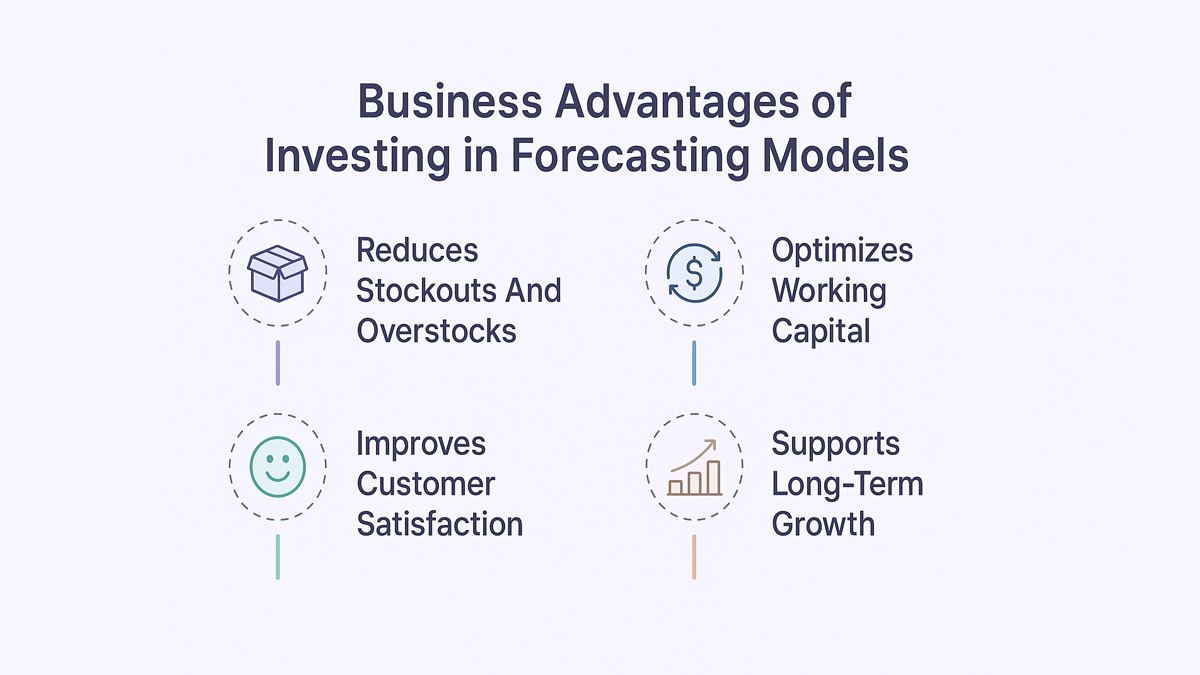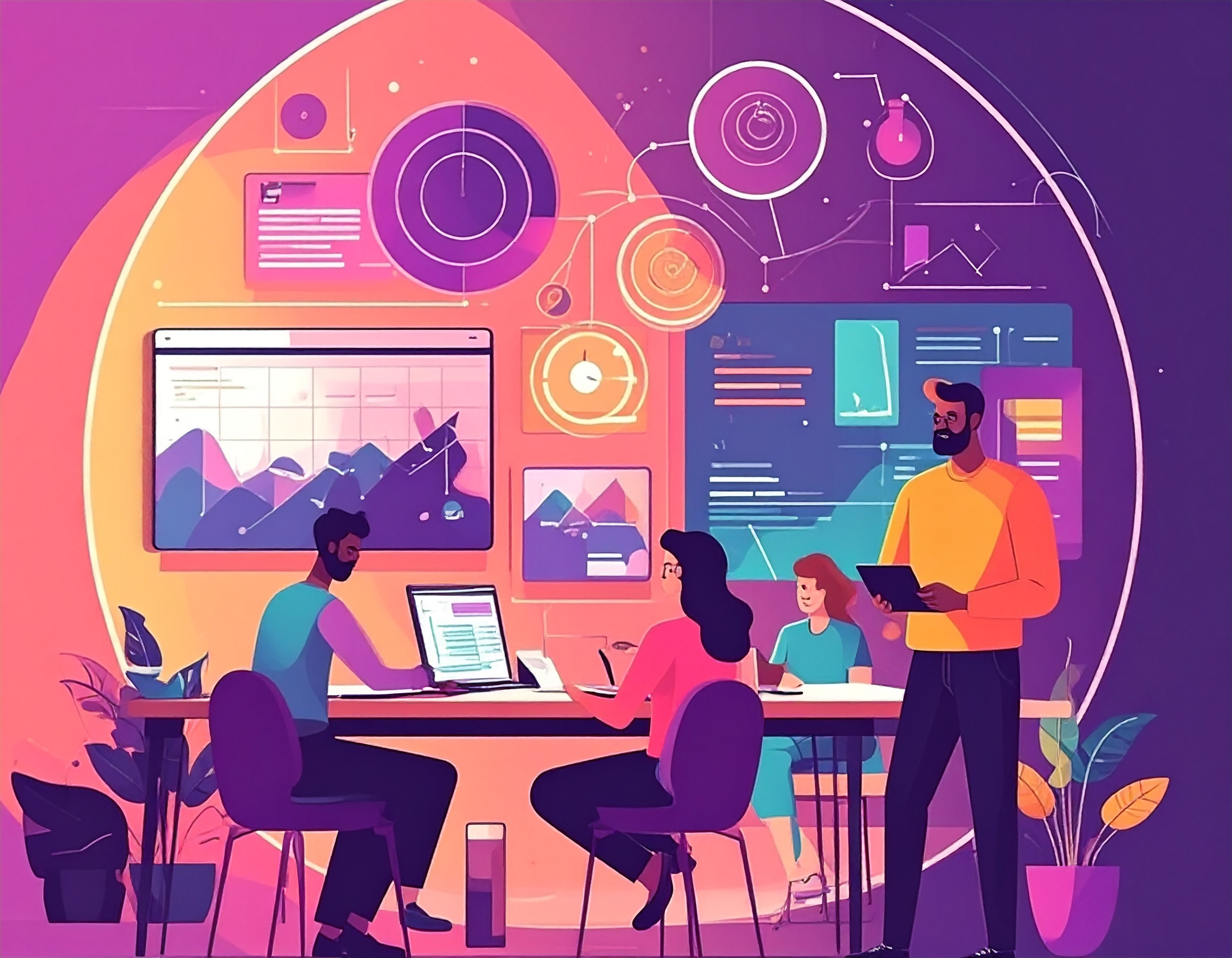

Demand Forecasting: Methods, Challenges, and Smart Solutions for 2025

Demand Forecasting: Methods, Challenges, and Smart Solutions for 2025
Explore demand forecasting methods, challenges, and tools to improve planning, cut costs, and align supply with real demand.


Imagine launching a new product with high expectations, only to find shelves empty weeks too soon - or worse, piled high with unsold inventory. That’s the high-stakes world of demand forecasting. In today’s fast-moving supply chain ecosystem, accurately predicting customer demand is the difference between profit and waste. Effective demand forecasting is a cornerstone of modern supply chain management, helping businesses balance efficiency and responsiveness. Getting it right can streamline operations, reduce costs, and keep your business competitive.
What this blog will cover:
- What is demand forecasting?
- Types of demand forecasting methods
- Common challenges in demand forecasting
- How demand forecasting supports effective demand planning
- Business benefits of investing in a demand forecasting model
- Practical solutions for demand forecasting
- How Spendflo helps with demand forecasting
- Frequently asked questions on demand forecasting
What is Demand Forecasting?
Demand forecasting is the process of estimating future customer demand for a product or service using historical data, market trends, and predictive analytics. It helps businesses make informed decisions about inventory, production, staffing, and budgeting by anticipating how much of a product customers will want and when. Accurate forecasting reduces guesswork and keeps supply aligned with real-world demand. It also strengthens inventory management by ensuring products are stocked at the right place and time.
Types Of Demand Forecasting Methods
There’s no one-size-fits-all approach to forecasting demand. The method you choose depends on your industry, data availability, product lifecycle stage, and even how quickly market conditions change. Below are the most widely used types of demand forecasting methods - each with its own strengths and ideal use cases. Each of these methods helps organizations anticipate customer needs more precisely and tailor their offerings accordingly.

Qualitative Forecasting
When historical data is limited - or nonexistent - businesses turn to expert opinions, market research, and customer surveys. This approach is common for new product launches or rapidly evolving industries. While it relies more on intuition than hard numbers, qualitative forecasting can offer valuable insights in uncertain or innovative markets.
Quantitative Forecasting
Rooted in hard data, quantitative forecasting uses historical sales, trends, and statistics to predict future demand. Reliable historical sales data provides the foundation for these calculations, ensuring forecasts reflect genuine market behavior. It works best when you have consistent, accurate data over a long period. Methods like moving averages, regression analysis, and exponential smoothing fall under this category.
Time Series Analysis
This method focuses on patterns over time - seasonality, trends, and cycles. Businesses often rely on this approach to predict seasonal demand surges, ensuring timely replenishment and readiness. It’s especially useful for retail, manufacturing, and supply chain teams dealing with recurring fluctuations. Think holiday season surges or post-summer slumps. The idea is simple: past patterns often repeat, so track them well.
Causal Models
Causal models dive deep. They consider relationships between various variables - marketing spend, economic conditions, competitor activity - and how these factors influence demand. Advanced predictive models refine these relationships, turning complex data into actionable forecasts. It’s the most data-intensive method and often powered by AI and machine learning. Many organizations now rely on neural networks to identify hidden correlations across vast data points for enhanced precision. For businesses aiming for precision, causal models can be game-changing.
Common Challenges In Demand Forecasting
While demand forecasting is powerful, it’s not foolproof. Several internal and external factors can distort projections, even when backed by solid data. Recognizing these challenges is the first step to improving accuracy.
Lack Of Accurate Historical Data
Forecasting is only as good as the data behind it. Inaccurate, incomplete, or siloed data can throw off even the most advanced models. This is especially problematic for companies launching new products or entering new markets where past benchmarks don’t exist.
Rapid Market Changes
Consumer preferences shift fast - sometimes overnight. Whether it’s due to economic shifts, competitive moves, or sudden global events (like pandemics), these unpredictable changes can make historical trends irrelevant. Evolving customer preferences add another layer of complexity, demanding constant recalibration of demand signals. Forecasting tools need to be agile enough to adapt in near real-time.
Demand Volatility
Some industries - like fashion or tech - face highly volatile demand due to trends, seasonality, or innovation cycles. Predicting peaks and dips becomes a constant challenge, especially when external influences like influencer marketing or product reviews accelerate changes.
Internal Silos and Poor Collaboration
When sales, marketing, and operations teams don’t communicate, demand forecasts suffer. Each team may use different assumptions or metrics, leading to inconsistent forecasts. A lack of cross-functional collaboration often results in missed opportunities or misaligned inventory.
How Demand Forecasting Supports Effective Demand Planning
Demand planning is like building a bridge between customer expectations and business operations - and demand forecasting is the blueprint. Forecasting gives planners the insight needed to align supply with actual demand, avoiding overproduction or costly stockouts.
Accurate demand forecasts ensure that inventory levels match real-time needs, enabling smoother procurement cycles and more strategic sourcing. They help production teams schedule outputs more efficiently and empower finance leaders to allocate budgets with confidence. The result? Better resource utilization, fewer surprises, and a supply chain that moves with purpose instead of guesswork. Tracking detailed sales patterns over time allows planners to fine-tune production and avoid unnecessary fluctuations.
Business Benefits Of Investing In A Demand Forecasting Model
A strong demand forecasting model isn’t just a back-office tool - it’s a strategic asset. When done right, it can reshape how a company operates, scales, and serves its customers. Here are some of the core benefits businesses can unlock by investing in reliable forecasting systems:

Reduces Stockouts And Overstocks
Striking the right inventory balance is tricky. Forecasting helps maintain optimal stock levels, preventing lost sales due to empty shelves and excess costs tied to unsold inventory. It keeps cash flow healthy and warehouses manageable. This proactive balance directly contributes to better inventory optimization and smoother supply operations.
Improves Customer Satisfaction
When customers get what they want, when they want it, loyalty follows. Demand forecasting ensures your supply chain is ready to meet expectations, reducing delays and backorders that can damage brand trust.
Optimizes Working Capital
Inventory ties up capital. With better demand predictions, businesses can avoid over-purchasing and free up funds for other priorities - like product development, marketing, or expansion initiatives.
Supports Long-Term Growth
Forecasting offers more than just day-to-day efficiency. It helps businesses spot trends, plan for seasonal shifts, and make strategic decisions with confidence. Combining multiple forecasting techniques further strengthens reliability, blending qualitative insight with quantitative precision. With a clear view of demand patterns, companies can scale smarter and faster.
Practical Solutions For Demand Forecasting
Forecasting may sound like a complex task - and in many ways, it is - but practical solutions exist to simplify the process and improve accuracy over time. Here’s what modern businesses are doing to stay ahead.
Use Of AI And Machine Learning
AI-powered tools analyze massive datasets in real-time and learn from every cycle, constantly improving their forecasting accuracy. The use of Artificial Intelligence enables faster pattern recognition and continuous enhancement of forecasting outcomes. These solutions can detect subtle patterns that human analysts might miss, making them ideal for high-volume, fast-changing markets.
Real-Time Data Integration
Instead of relying solely on past sales, companies are integrating real-time data from CRMs, ERPs, and even social media trends. This up-to-the-minute insight helps them adapt forecasts quickly when the market shifts unexpectedly.
Cross-Functional Collaboration
Collaboration between finance, marketing, sales, and operations ensures that everyone is working from the same assumptions and data sets. This unified approach eliminates guesswork and misalignment.
Continuous Forecast Accuracy Monitoring
It’s not enough to build a forecast - you have to track how it performs. By regularly comparing forecasts to actual outcomes, teams can adjust models and inputs for better accuracy over time. Many companies now complement traditional forecasting with demand sensing to react faster to short-term market shifts.
How Spendflo Helps With Demand Forecasting
Spendflo plays a critical role in streamlining demand forecasting by aligning SaaS procurement with real-time business needs. Our platform gives finance and procurement teams deep visibility into usage patterns, vendor commitments, and renewal timelines - helping forecast demand for software tools more accurately. By automating procurement workflows and consolidating spend data, Spendflo eliminates guesswork, making it easier to plan purchases in sync with actual demand cycles. When integrated with demand forecasting software, these insights create a unified view of spend, usage, and future requirements. The result? Smarter budgeting, fewer surprises, and better forecasting that reflects what teams truly use and need.
Frequently Asked Questions on Demand Forecasting
What are the key benefits of demand forecasting?
Demand forecasting helps businesses reduce stockouts, optimize inventory, improve customer satisfaction, and make smarter financial and operational decisions. It also supports better alignment between supply and demand, leading to improved efficiency and cost savings.
How accurate is demand forecasting in real-world scenarios?
Forecast accuracy varies depending on the method used, data quality, and market volatility. Fluctuations in customer behavior can also influence outcomes, underscoring the need for dynamic and adaptive models. While no forecast is perfect, using advanced tools like AI and combining multiple data sources can significantly improve reliability.
What tools are used for effective demand forecasting?
Popular tools include Excel-based models, ERP systems, and advanced platforms that use AI and machine learning, like NetSuite, SAP IBP, and Kinaxis. Many companies also integrate real-time data from CRMs and analytics dashboards.
How does demand forecasting impact procurement strategies?
Accurate forecasts help procurement teams plan purchases more effectively, negotiate better with suppliers, and avoid last-minute scrambles. It ensures the right products are available when needed without overbuying, improving both cost control and vendor relationships.










.png)




.png)










.avif)





